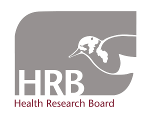The GHO Project


GIS Health Research Open Source
Pilot programmeme, September 2011
Dr. Jan Rigby, Centre for Health Geoinformatics, NUI Maynooth (jan.rigby@nuim.ie)
October, 2011
Participants
Developers: Jan Rigby, Chris Brunsdon (University of Liverpool, UK); Chris Skelly (ABIN, Australia); Ben Wheeler (PMDS, UK); Martin Charlton, Carson Farmer, Ronan Foley, Dennis Pringle, Ishwari Sivagnanam, Walter French (NUI Maynooth).
New trainers: Prakit Srisai, Jamorn Makaroon, Albino Luciani, Mavuto Tembo, Kebba Touray.
For information on the background and context of the GHO project, please view the GHO Project Background page.
Findings
The first small group of potential trainers was identified from personal contacts. This produced 2 people from the Field Epidemiology Training programmeme (FETP) in Thailand, which trains qualified medics and vets to respond to disease outbreaks. A further three were from health research groups in Kenya, Nigeria and Malawi. Four of the five travelled to NUI Maynooth in early September 2011. All travel and subsistence costs were met by the GHO project.

Trainers evaluating their own progress
The trainers worked with 3 of the GHO developers to evaluate training materials which had been prepared. These included lectures and practical exercises. The software proved to be fit for purpose, and the unanimous view from evaluation was this is was this route (open source) or nothing. The use of GIS in health research was considered essential, but could not be supported by a commercial software route. The materials needed to be concise, as costs of printing and/or photocopying needed to be minimal.
The trainers needed to be able to practise their training with the materials whilst they had support from the developers. NUI Maynooth had therefore offered a three day 'experimental' course in GIS for Health Research, seeking volunteers to be trained. Invitations were sent out to relevant NGOs, the Health Research Board and the university. Volunteers came forward from Concern Ireland, the HRB and the university. This course was offered at no cost; the disadvantage was that several volunteers withdrew a day or two before the training course started.
Evaluation during and after this course was immensely positive, in terms of the approach, the software and the ability of the new trainers to communicate and to support the learning. Suggestions, particularly around the need for a 'theme' and more detailed context for the practical exercises, have been adopted.
The GHO Project has already seen its first course delivered, in Thailand with the FETP. At KEMRI, in Kenya, an awareness course in GIS is also being planned. The trainers are keen for a more advanced, analytical course to be developed.
Conclusion
There is no doubt that the way forward in capacity building with GIS is through Open Source approaches. This was demonstrated on the final day of the course when the volunteers form Concern were able to see their latest field survey move from a spreadsheet to points on a map, enabling more efficient use of resources in the field.
There are numerous stumbling blocks to be overcome, in particular the resistance of organisations' IT services to Open Source software. This project requires further funding for sustainability, and yet does not readily tick the boxes of the funding agencies.

Back Row, L-R: Prakit Srisai, Jan Rigby, Martin Charlton, Jamorn Makaroon, Carson Farmer
Front Row, L-R: Chris Brunsdon, Albino Luciani


